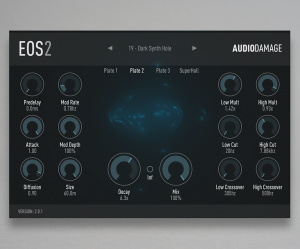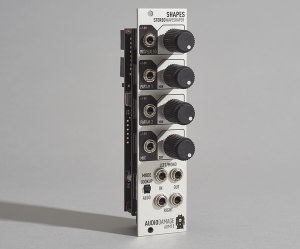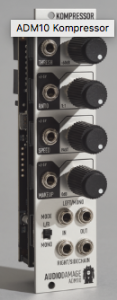
AUv3 64-bit IAA & Standalone 64-bit
iOS 11 or newer and a separate purchase, coming soon!
VIDEO OVERVIEW
HIGHLIGHTS
| Oscillate! Continua is a virtual analog synth with a twist: a continuously morphable threesome of oscillators. With three interconnected controls defining the wave shape, Continua has a virtually limitless supply of waveforms, especially when you add cross modulation and noise in to the mix. |
| Filter! With two morphing state-variable filters (morph between LP, HP, BP and notch in 2-pole and 4-pole topologies), Continua has a broad palette of tone-shaping at its disposal, and is well suited for long, complex, evolving soundscapes. |
| Modulate! With a whole host of modulation possibilities, Continua is capable of both simple synth sounds or huge, evolving soundscapes. With two ADSRs and two Flexible Envelope Generators (essentially an envelope sequencer), plus four of our Flexible (continual waveshape) LFOs and a sophisticated sample & hold function, you can modulate any knob on the user interface with a simple right click (double tap in iOS.) |
| Control!Continua is fully customizable to your taste and playing style. With full and extensive MPE support, it can take advantage of the extended control set of your Linnstrument, Seaboard, Soundplane, Continuum, or other MPE controller, and support for TUN files lets you use tuning tables. The resizable Hi-DPI GUI lets you adjust the size to match your visual needs, and the cross-platform preset mechanism lets you share your creations with your friends and collaborators, no matter what system they are using. Save your preferred settings as the default state, and Coninua will always be exactly what you need. |
AUDIO EXAMPLES
FEATURES
- Three Flexible Oscillators
Continuously variable morphing waveform, with warp, shape, and skew controls. - Dual Morphing Filters
Filters can be used in serial or parallel modes, and morph from lowpass through bandpass and highpass to notch in 2-pole and 4-pole configurations. - Noise Source
Noise source features a “color” control that affects tonal characteristics of the noise. - ADSR x 2
Continua has two ADSR-style envelope generators, with curve on attack, decay, and release. - Flexible Envelope Generator (FEG) x 2
The two FEGs are arbitrary function generators, with up to 99 steps, curve and step level control, arbitrary loop points, and host tempo sync. - Flexible Low-Frequency Oscillator (FLFO) x 4
The four FLFOs utilize four controls (phase, shape, skew, and warp) to access a virtually limitless palette of waveforms, and feature host tempo sync and retrigger. - Sample And Hold
The S&H mod source can sample noise (random) or any of the other mod sources, at either a user-defined rate or a musical division, and includes built-in smoothing and distance limit (for a “walk” effect). - Modulation
Every knob in Continua is a mod destination, with a very fast and simple assignment matrix access with a right-click on the knob (double-tap on iOS). - Tuning Tables And Global Tuning Offset
Re-tune Continua to new intonations and temperaments using the open-source and easy-to-use TUN file format. A global tuning offset (default to A=440) allows you to easily retune the entire synth to match a different A frequency without using a tuning table. - MPE (MIDI Polyphonic Expression)
Continua understands both “legacy” MIDI and MPE. Use your Linnstrument, Roli Seaboard, Haken Continuum, Madrona Labs Soundplane, or Sensel Morph (among others) to directly access per-note pressure, pitch bend, and modulation. - Per-Instance Settings
Continua utilizes a per-instance customization method: set MPE mode, aftertouch smoothing, pitch bend range override, tuning table, and global tuning offset for each instance in your DAW, with an option to save any state as your global starting point. - Factory Presets
Continua comes with a substantial collection of factory content, including Designer Presets from Red Means Recording, Glitch Machines, and Sonalsystem. - Cross-Platform Preset Format
Continua utilizes an XML-based preset manager. Work between multiple systems without troubles, make a preset on your desktop machine and paste it to the iOS version with Handoff, easily share your creations with your friends, or make a preset bundle to sell. - Fully Resizable Hi-Dpi/Retina GUI
Continua’s vector-based GUI is resolution-agnostic, and displays the same on every system and resolution. Easily resize the UI (per instance) to match your visual needs, from postage stamp to poster-sized.






